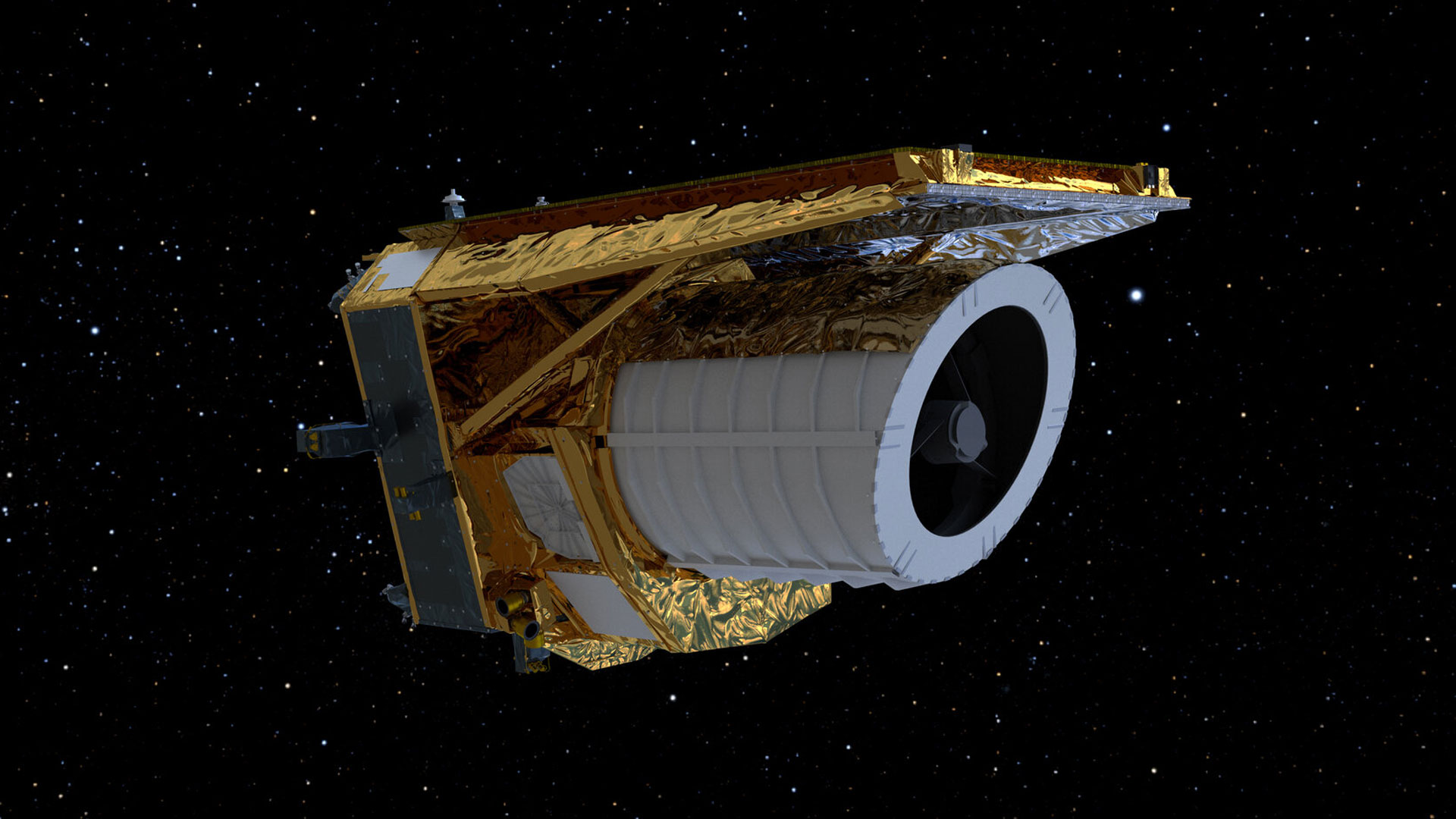
The European Space Agency has revealed that a few layers of ice approximately the width of a strand of DNA have begun to impact its Euclid telescope’s optics.
Euclid was launched aboard a SpaceX Falcon 9 in July 2023. The telescope was selected as the second medium-class mission of ESA’s Cosmic Vision programme in October 2011. It is designed to explore the composition and evolution of the dark universe.
ESA released the first full-colour images captured by Euclid in early November 2023. Then, in February 2024, the agency announced that the telescope had officially begun its survey of the dark universe. Earlier today, ESA revealed that just over a month into its six-year mission, Euclid had run into trouble.
The problem was discovered after operators noticed a small but progressive decrease in the amount of light coming from stars that were repeatedly observed by the telescope’s VISible instrument.
According to the agency, small amounts of water absorbed from the air during assembly on Earth were gradually “teased out by the vacuum of space.” The water then stuck to the first surface it landed on and froze in place. Unfortunately for Euclid, some of this water has frozen on highly sensitive mission-critical components. The ice build-up is likely just a few tens of nanometres thick, which is equivalent to the width of a strand of DNA. The extreme sensitivity of the telescope’s optics means that even this tiny amount of ice is affecting the data collected by Euclid.
This icing issue is not uncommon, and, as a result, part of the telescope’s commissioning phase included an “outgassing campaign.” This process involved Euclid turning to face the Sun for a total of 96 hours. This process was implemented specifically to reduce the risk of ice build-up after the agency’s Gaia mission faced a similar issue.
According to ESA, teams have been working on the issue for several months and are currently in the process of testing a newly designed procedure to de-ice the telescope’s optics. The solution devised will see operators utilizing onboard heaters to independently warn individual mirrors. After each mirror is warmed, operators will examine if there has been any change. The hope is to isolate the affected areas without having too great an impact on the telescope’s delicate thermo-optical stability.
The agency has not yet provided a timeline for when its plan to begin de-icing Euclid will be implemented.
This is not the first issue faced by ESA’s Euclid mission. In August 2023, the agency revealed that the commission of the telescope’s fine guidance sensor was taking longer than expected. On 5 October, ESA announced that a patch had been successfully completed, allowing teams to finalize the telescope’s commissioning phase. The icing problem will, however, not be as easily dealt with.
According to ESA, small amounts of water will continue to be released over the life of the telescope. Once the affected areas are isolated, regular de-icing operations will need to be conducted. It is, however, hoped that by cementing an effective solution early on in the telescope’s six-year mission, the agency will reduce the amount of precious mission time required for these operations.



